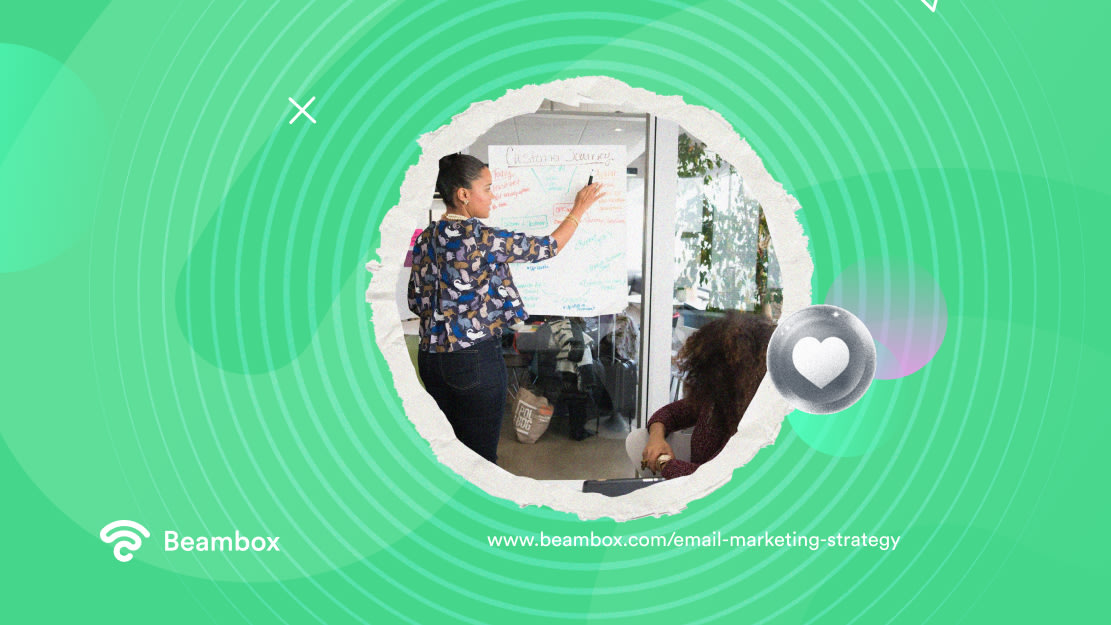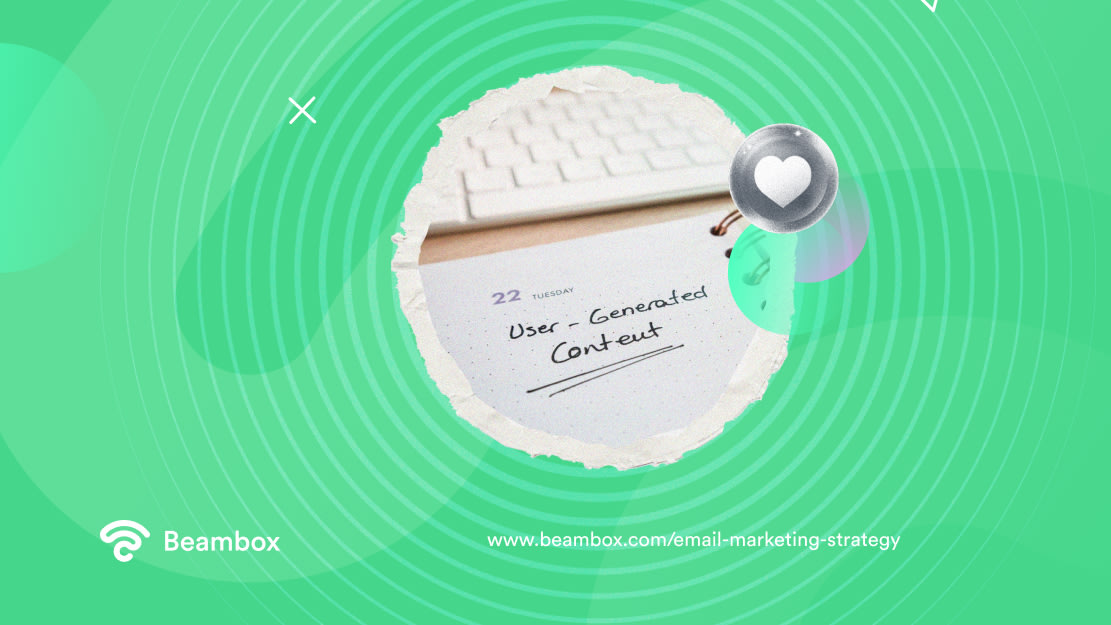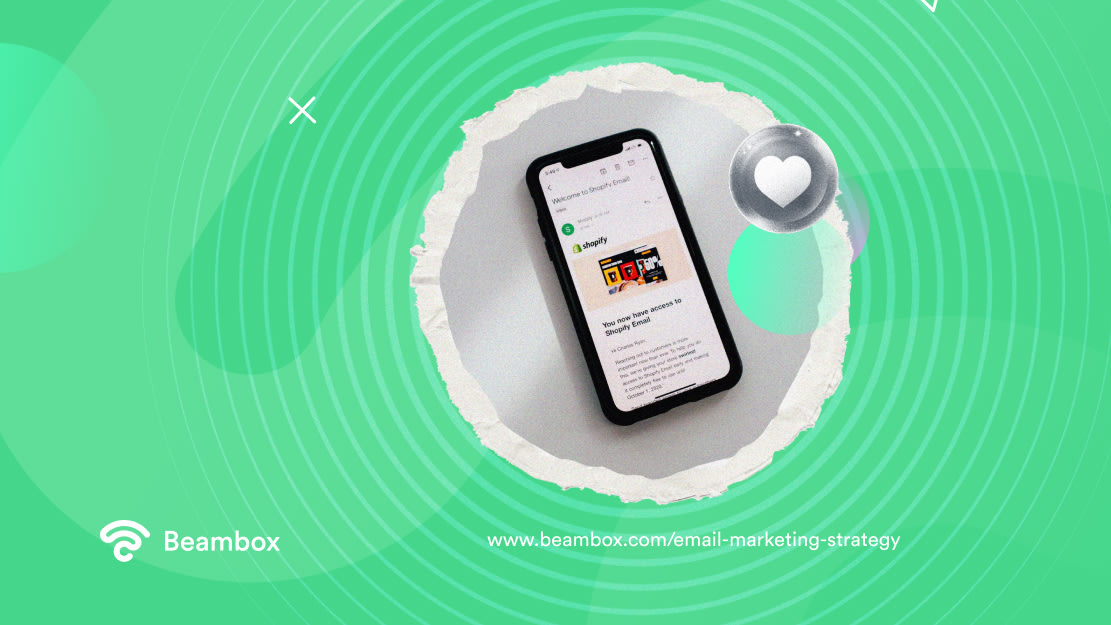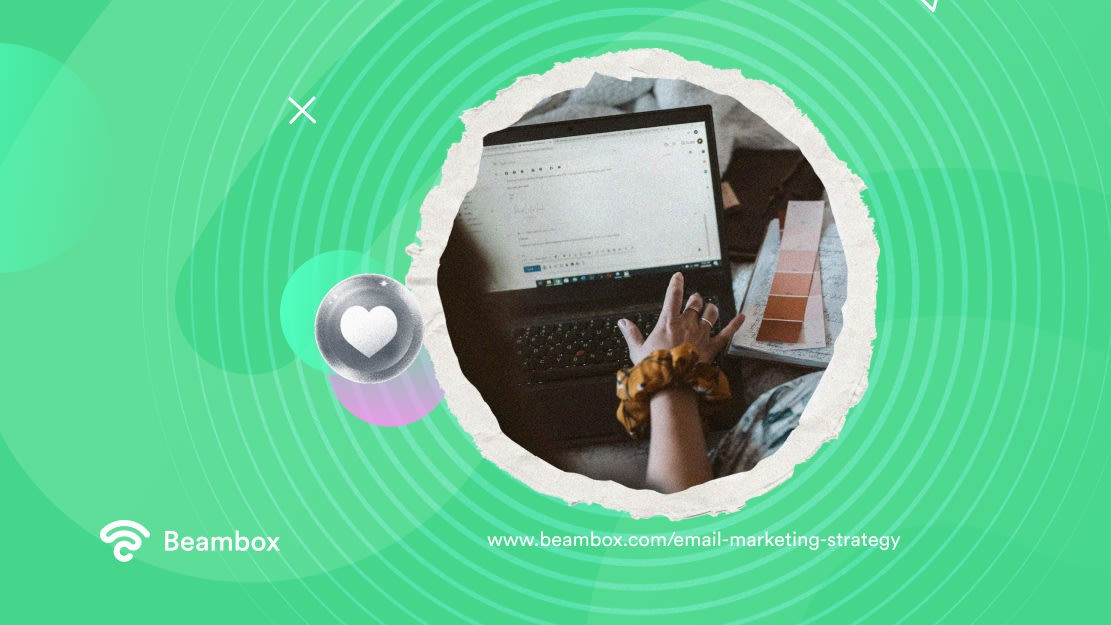Relevant, consistent, and engaging content is the ultimate tool for attracting and engaging your target audience. Even though most people know this, they often need help implementing it. If you’re facing a similar situation, an email marketing strategy can help.
Besides, email is the best way to forge connections and build meaningful relationships. From freelancers and solopreneurs to small and large businesses, all benefit from this marketing tactic.
Here, we’ll explore those reasons and talk about inbound strategy before discussing email strategies to implement. You’ll also learn some examples of the challenges of email marketing. In short, this article will prepare you for everything that might come your way when creating these strategies.

What Is the Definition of an Email Marketing Strategy?
An email marketing strategy is a roadmap for using email to reach your target audience and achieve specific goals. It’s a plan that helps you communicate with potential and current subscribers through email in the most effective way.
Despite being one of the oldest forms of communication, email remains a favorite of many marketers. Those who doubt this strategy often ask why it’s so popular. So, let’s list its benefits after answering, “What is the definition of an email marketing strategy?”
Firstly, email is the most personalized form of communication. You craft the email specifically for the recipient, even with automation.
Moreover, you own your business email lists, so there’s no algorithm to beat. Your message will reach precisely where you want it to, provided you avoid spam filters.
Another thing that makes email messages so great is that they never leave your recipient’s inbox by themselves. Unless your recipient deletes the message, it stays in their inbox.
Besides, you’ll have explicit permission from your audience to send emails, provided you haven’t used illegitimate means to gather contacts. They’ve already shown an interest in what you have to say. They’ll never ignore your email if you continue to hold that interest.
From a business perspective, promotional emails bring unmatched ROI because you earn $36 from every $1 you spend.

How Can Email Marketing Fuel Your Overall Inbound Strategy
Email marketing enhances your inbound strategy since both rely on content. It nurtures leads, drives conversions, and strengthens customer loyalty, all within your inbound strategy. Yet, people often wonder, “How can email marketing fuel your overall inbound strategy?” The answer lies in the stages of your customer journey. But first, let’s discuss what inbound strategy is.
It is all about creating and distributing valuable content that addresses the challenges and interests of your ideal customer. The goal is to create a positive environment around your subscribers where they can actively seek information.
There are four stages in the customer journey: awareness, conversion, closing, and delight. During all these stages, you must create different content to promote the customer from one stage to the next.
In the awareness stage, email marketing helps you capture leads. You can gain subscribers by offering to send valuable content, such as industry insights and resources, through email. Every person who agrees to receive your email becomes a warm lead.
Once that happens, they enter the conversion stage. This is the longest stage since you have to gain their trust and slowly guide their buying decisions. Here, email marketing lets you send informative emails with compelling calls to action through automated drip campaigns.
Then comes the closing stage, where your customer is ready to purchase. Email marketing lets you segment this audience based on its history, behavior, and preferences. Each segment receives targeted emails like offers, which are enough to close the deal.
In the delight stage, email marketing goes beyond the sale by letting you send email loyalty programs, exclusive offers, etc. Going this extra mile means you can always stay at the front of your customer’s mind.
5 Steps to an Effective Email Marketing Automation Strategy
Creating an email strategy is one thing, but putting it into action is a whole other task. Trying to do everything manually will only overwhelm you. As a result, you may even see a decline in the conversion rate. After all, you need all your brain power to create effective emails.
An effective email marketing automation strategy will help you relax while the software does its job. So, here are the five steps you need to follow:
- Set goals: Ask any marketing expert about the first step to creating a strategy, and they’ll always say “clear goals.” So, start by determining what you want to achieve from your email marketing campaigns. Is it increased revenue, an elaborate network, or simply customer loyalty for your businesses?
- Choose a tool: There’s no concept of automation without an email marketing tool. That much is common knowledge. However, you must ensure that your chosen tool supports A/B testing, pre-built templates, dynamic content, and reporting capabilities.
- Map out the customer journey: Automation works best when you set triggers. But for that, you must know your customer journey. Look where your customers are the most active and what challenges they face before converting.
- Write the content: Using the research from the above step, write the content for each type of email. Add a clickable email subject to each. And remember, if your content isn’t interesting, even the perfect subject won’t improve your bounce rate.
- Create automated workflows: Lastly, tell the tool when to send what email. You also need to set the exact sequence you want them in before testing the strategy and launching it.
5 of the Best Email Marketing Strategies
According to a survey, 60% of customers want businesses to contact them through email. If you’re a business owner but aren’t taking advantage of this, you’re leaving money on the table.
Besides, emails convert 13% better than social media posts and 11% better than social media ads. Whether you’re a business owner, freelancer, or individual content creator, email is your best shot at reaching your audience. However, you need a proper plan for it. So, here are the five best email marketing tactics that work wonders.
1. Include Interactivity in Your Emails
The first marketing email strategy is to include interactivity in your emails. It engages your audience and makes them feel like they’re a part of your brand. That is the first rule if you want audience loyalty.
You don’t even have to go crazy with this. A simple game like spinning the wheel or guessing the product would be enough.
You can also incorporate quizzes and trivia about you in the email. See how well your audience knows you and reward those who score good points.
Remember, don’t just add a CTA like “Buy now” and call it a day. Of course, it will count as interactivity when the customer clicks on this button. But not all emails are sales pitches.
Stripo is an impressive tool that lets you gamify your emails for audience targeting. However, you might be unable to embed all games in the email. In such cases, simply provide a link to the game.

2. Personalize Your Email Marketing Messages
As mentioned earlier, personalization is what makes email a marketer’s favorite.
Would you rather open an email that starts with “Hi there” or one that addresses you by your name? That’s the power of personalization.
But it doesn’t stay within the bounds of first names. Email marketing tools like HubSpot and Omnisend help you understand your audience. You can also use customer relationship management systems, social media analytics, or even Google Analytics.
Then, leverage that data to personalize your emails. For example, beauty influencers can talk about a specific problem their followers face. Similarly, restaurant marketing can include launch discounts for customers in a particular location.
The options are endless, and the choice is in your hands.
Taking advantage of seasonal holidays is another simple way to remove the generic vibe from your emails. So, understand what holidays your audience celebrates and celebrate them with your customers through emails!
3. Don’t Forget To Follow Up
Following up might seem irrelevant as an email marketing strategy, but it can do wonders to convert your audience.
Let’s say you’ve spent hours creating a cold email strategy and sent the perfect pitch but didn’t get a response. That’s enough to disheart anyone, but what a simple follow-up can do often surprises many people.
Your recipient may have wanted to reply but got busy. Maybe they never even saw your email, and it disappeared in a sea of other messages. In this case, following up with a simple message reminding them of your previous email will do.

4. Leverage User-Generated Content
Next, we have a strategy that builds trust among your audience: displaying user-generated content (UGC). It is a surefire of building authority by telling your audience what others think about you.
The most obvious step is to share reviews. As a matter of fact, managing online reviews is important also because of this. It gives you material to share with potential customers that someone genuinely wrote.
For example, companies can share reviews that others have written about them. Content creators can share materials where their audience has mentioned them. But you have to be very careful here since the wrong language can portray you as boastful.
5. Put Your Best Design Forward
Nobody wants to read an email that’s all over the place. Your emails must have a proper hierarchy to guide your audience’s eyes. Reducing effort for them as much as possible encourages your audience to read every message.
Therefore, put some thought into your email designs. Use pre-made templates to guide you when you’re just starting. Adding pictures and headings will make the email pleasing to the eye.
Moreover, you must add your brand colors and messaging to spark recognition. Without these things, you’ll be wasting your efforts.
Since mobile phones are people’s go-to devices to view emails, make them mobile-friendly. Otherwise, your recipient might delete it right away.

Best Email Marketing Strategy Examples To Put Into Practice
Now that you’ve discovered some of the best strategies, you must be ready to implement them. However, for any type of marketing, the initial course of action includes exploring some examples.
So, to create an email strategy, you must first look at example email campaigns to guide your own. If you’re unsure where to start looking, here are three best email marketing strategy examples to help you.
- Abandoned cart emails: Leaving items in the cart doesn’t mean you’ve lost the customer. You can still win back the sale by following the example of Prose. It’s a hair care company that sends abandoned cart emails reminding customers of the items in their cart. It does so with a brand-relevant, compelling CTA, and a discount!
- Welcome emails: There are many types of emails that you can send to your target audience. But the first one should always be a welcome email. The perfect example of this would be Cozy Earth. It immediately provides a discount in the email to first-time buyers, increasing its sales while making a lasting impression.
- Review requests: Using emails to request reviews is a decades-old strategy that always impresses. J Crew stands out in this aspect by sending a perfectly tailored email to ask customers to leave a review. They create a separate review button for each item the customer orders, reducing hindrance as much as possible. Then, there’s the impressive language they use by saying things like, “You’re the best!”
Challenges and Best Practices of Email Marketing
After learning strategies, examples, and automation, ignoring the challenges of email marketing for beginners would be a bad idea. So, this section will explore those before providing the best practice for each.
It’s not easy to convince people to provide you with their email addresses. Then, there’s the responsibility to comply with the guidelines. Even the slightest mistake can put you in legal trouble.
For example, do not buy an email database. It may seem like a quick fix, but it can create a legal nightmare. To avoid this, stick to the legitimate means of building an email database. These include website pop-ups, gated content, incentives, or a solid WiFi marketing solution.
Additionally, maintain your lists and databases by regularly cleaning them. Remove unresponsive accounts and those who have unsubscribed.
Secondly, you might have trouble retaining your audience’s interest, which can lead to increased unsubscribe rates. Simply focusing on consistent and valuable content is enough to avoid this. Moreover, keep each email’s message simple and concise to avoid confusing your subscribers.
Another challenge you might face is spam filters. Email service providers have triggers that stop spam messages from reaching your recipient’s inbox. To avoid this and improve email deliverability, focus on your email domain. Add a signature, and don’t use suspicious domain names. Plus, keep the content relevant and coherent with your audience’s interests.

Utilize Email Marketing for Sales and Engagement
By now, you should feel confident about creating an email marketing strategy.
To recap, email marketing brings you unmatched ROI by fueling your inbound strategy.
To make the most of this email campaign strategy, you must include interactivity, personalization, follow-ups, creative designs, and UGC. Plus, don’t forget to automate your email workflows for better results with less effort.
Our tool makes it easy to run email campaigns and collect contact details through a custom captive portal. Beambox also allows for SMS marketing, getting reviews, and personalized emails. Want the best email marketing? Start your Beambox free trial today!
Get Started With Free WiFi Marketing
Beambox helps businesses like yours grow with data capture, marketing automation and reputation management.
Sign up for 30 days free